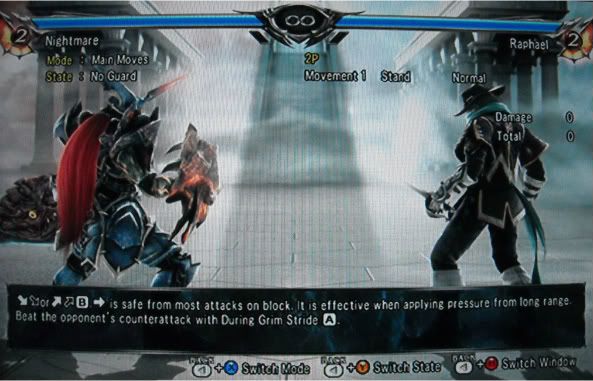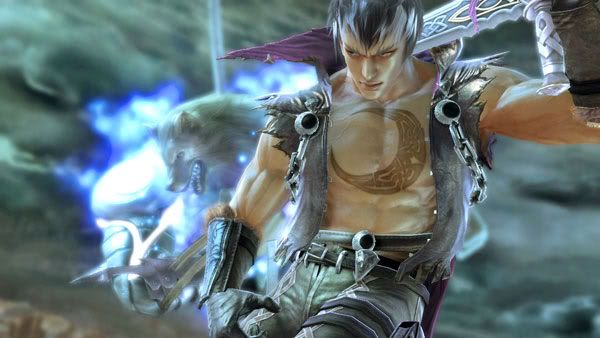This post has not been edited by the GamesBeat staff. Opinions by GamesBeat community writers do not necessarily reflect those of the staff.

Namco Bandai’s Soul Calibur series is my favorite 3D fighter, but this sword contest has a reputation for rewarding button mashing. This is understandable: Each character have around a hundred attacks that hit in a variety of ways and may contain special properties such as guard-breaks.
Newcomers become frustrated because they don't know which moves to use, so they resort to random slashing or gimmicks like Cervantes' gun shot and flying tackle that wouldn't work on experienced players. Soul Calibur 5 has no true tutorial, so I thought that players would have to learn through trial and error as usual. But to my surprise, training mode actually has advice for these journeymen.
While playing with the bipolar assassin Tira, I decided to try out the “Main Moves” function that's available through the menu or by using the shortcut buttons shown at the bottom of the screen. What I expected was a way to look at each move without checking the command list all the time. Instead, a text window with this information popped up:
“…(Downforward + B) launches the opponent very high when it hits. Attack on wakeup by following up with (Forward, Forward + A, A).”
Wait a minute: Is the game teaching me a tactic?
Soul Calibur players know that Downforward + B is an easy way to start a combo with most fighters. The second move does combo after the launcher, but you can also use it to pressure others as they try to get up. Tell me more.
“…(Forward, Forward + A, A) is a mid horizontal attack and is very difficult to evade. This is unsafe when blocked, so use it after evading the opponent’s attack with the 8-way run.”
This description just taught me three things.
- Forward, Forward + A, A is a mid attack, which means it will hit crouching fighters.
- I'm open to attacks if my opponent blocks it, so the earlier advice is for when I believe my opponent will crouch or attack after the knockdown.
- I know from past games that Soul Calibur has a special relationship between horizontal attacks (A moves), vertical attacks (B moves), and 8-way run (dodging). Generally, horizontal slashes stop moving targets, vertical strikes deal more damage, and 8-way run avoids vertical strikes. Forward, Forward + A, A would be a good counterattack to use after I dodge a vertical attack.

Soul Calibur 5 has 10 of these tips for everyone on the roster. They cover what attacks are good at certain distances, how difficult it is for the opponent to punish them, and even follow-up tactics to catch your foe off guard. A few times the advice will discuss something technical for an in-game tutorial, like this example for the wolf-partnered Z.W.E.I.
“(Downforward, Downforward + B, then A+B+Kick) launches the opponent very high when it hits. Input the button for the second attack only if the first attack hits.”
In this "Brave Edge" attack, Z.W.E.I. launches his opponent in the air, and his wolf familiar follows up with a flurry of punches. But like Street Fighter 4’s EX moves, it requires some of the game’s new Critical Gauge super meter to use it. The important part of this tip is that unlike other Brave Edges, you have time to confirm that Downforward, Downforward + B connects before you press all three attack buttons and spend the meter. Normally you have to scour a hardcore site like 8WayRun.com for that kind of minutiae.
This feature isn’t perfect. It mainly benefits intermediate-level players who understand fighting-game lingo, and you would pick up most of these strategies over time anyway. Soul Calibur 3 for the PlayStation 2 had a true in-depth tutorial and glossary, but they have been lost to history ever since. Still, at a time when other major releases give newbies a list of combos to complete and call it a day, SC5 shows you why you should use certain techniques rather than just how to do them.
